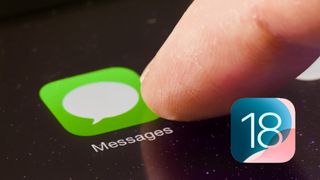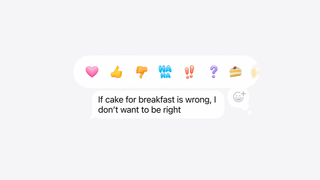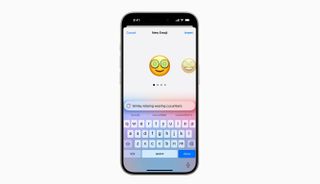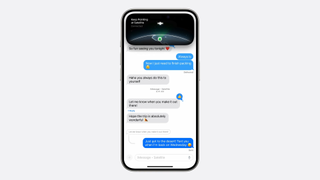iOS 18 iMessage — all the new features coming to your iPhone
iMessage is getting a much-needed makeover

iMessage is an app that millions of people use every day. But despite this, it’s been largely left alone by Apple for quite some time.
That’s set to change this year. At WWDC 2024, Apple revealed a whole host of improvements coming with the release of iOS 18, which is in a developer beta right now and will be released for all iOS 18 supported devices this fall, including the new iPhone 16.
Here are all the changes that are coming your way.
RCS for trouble-free messaging with Android
After years of Google pestering, Apple finally relented and promised to adopt the RCS standard at some point in 2024.
No, it won’t end the blue/green bubble divide of iPhone-to-Android messaging, but it should remove the barriers that made Android users second-class citizens in cross-platform iMessage group chats. That means higher-quality media sharing, read receipts, longer character limits and more.
However, it’s worth noting that Apple will apparently only support RCS Universal Profile 2.4 rather than the current version (2.6), which means it lacks end-to-end encryption and a few Google-specific features.
All new Tapbacks

Currently, Tapbacks — the emoji responses that stick underneath messages, usually sent in lieu of a full reply — are pretty limited. There are just six to choose from: a heart, a thumbs up, a thumbs down, a ‘Ha Ha’, two exclamation marks and a question mark.
Sign up to get the BEST of ShareShopping’s Guide direct to your inbox.
Upgrade your life with a daily dose of the biggest tech news, lifestyle hacks and our curated analysis. Be the first to know about cutting-edge gadgets and the hottest deals.
That changes with iOS 18. As with WhatsApp and Slack, you’ll be able to use any emoji as a Tapback, opening doors to the eyes, thinking face or smirk emoji if you think it appropriate.
But Apple is going beyond its rivals by also letting you use stickers as Tapbacks. If you swipe left on the suggested Tapbacks, you’ll be able to see your most used emoji and stickers, for a more personal approach.
Extra formatting options aplenty

Speaking of personalization, Apple is set to introduce rich text formatting options, meaning you can make your text bold, italicized, underlined or crossed out.
But Apple isn’t leaving it there, and has announced eight special effects that can be added to any character. These are big, small, shake, nod, explode, ripple, bloom and jitter — probably not something you’ll want to pop into every message, but a nice novelty all the same.
AI-generated emoji

The personalization doesn’t stop ther. Apple announced “Genmoji” — or AI-generated emoji as one of its big AI features for iOS 18.
@ShareShoppingsguide ♬ original sound - ShareShopping’s Guide
Just write in a prompt — like a smiley with cucumbers on the eyes, seen above — and your iPhone will generate an emoji to pop into your iMessage conversation.
Just note that this Apple Intelligence feature only works with the iPhone 15 Pro and iPhone 15 Pro Max. You need an A17 Pro processor. The new iPhone 16 and iPhone 16 Pros should also support this feature.
Scheduling messages ahead of time
@ShareShoppingsguide ♬ original sound - ShareShopping’s Guide
Sometimes, it’s nice to write a message that will be auShareShoppingatically sent at a time of your choosing. You can do that with Gmail, but not with iMessage — until now.
There's no need to set a reminder with Siri. With iOS 18 you can simply prepare a message, tap the ‘+’ button on the left and select a time with the “Send Later” option.
Messages via satellite

Starting with the iPhone 14, Apple introduced satellite communications for times when you’re without cell reception. The company says it has already saved lives.
With iOS 18, compatible handsets will be able to send iMessages and SMS via satellite — though only the former has end-to-end encryption.
There is still a question mark over the long-term pricing of this — Apple originally said that satellite communications is available free of charge for the first two years of an iPhone’s usage. The company then extended this by a year for the iPhone 14, so we’ve still not reached the point when anybody has theoretically had to pay. At this point, it’s not clear if and when anybody will — and more importantly, how much it will cost if they do.
Freelance contributor Alan has been writing about tech for over a decade, covering phones, drones and everything in between. Previously Deputy Editor of tech site Alphr, his words are found all over the web and in the occasional magazine too. When not weighing up the pros and cons of the latest smartwatch, you'll probably find him tackling his ever-growing games backlog. Or, more likely, playing Spelunky for the millionth time.
